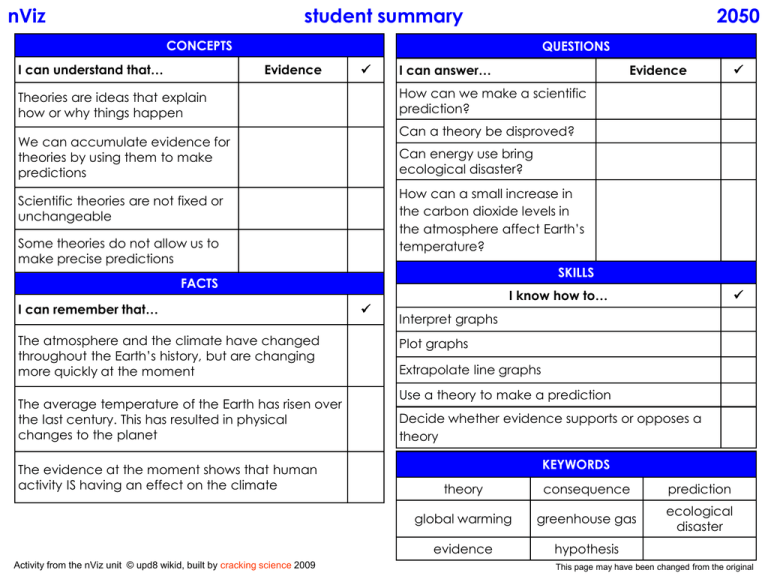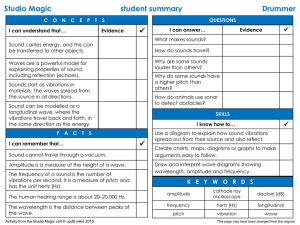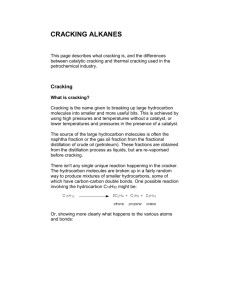NViz Student Guide
advertisement

nViz student summary 2050 CONCEPTS I can understand that… QUESTIONS Evidence I can answer… Can a theory be disproved? We can accumulate evidence for theories by using them to make predictions Can energy use bring ecological disaster? How can a small increase in the carbon dioxide levels in the atmosphere affect Earth’s temperature? Scientific theories are not fixed or unchangeable Some theories do not allow us to make precise predictions SKILLS FACTS The atmosphere and the climate have changed throughout the Earth’s history, but are changing more quickly at the moment The average temperature of the Earth has risen over the last century. This has resulted in physical changes to the planet The evidence at the moment shows that human activity IS having an effect on the climate Activity from the nViz unit © upd8 wikid, built by cracking science 2009 How can we make a scientific prediction? Theories are ideas that explain how or why things happen I can remember that… Evidence I know how to… Interpret graphs Plot graphs Extrapolate line graphs Use a theory to make a prediction Decide whether evidence supports or opposes a theory KEYWORDS theory consequence prediction global warming greenhouse gas ecological disaster evidence hypothesis This page may have been changed from the original nViz student summary Music Power CONCEPTS I can understand that… QUESTIONS Evidence What is meant by the term energy transfers In what ways does energy get wasted in transfers? Understand that in every energy transfer some energy is dissipated into the surroundings SKILLS FACTS Energy cannot be created or destroyed What do we mean by energy efficiency? You can classify how the energy is being transferred Use the correct terms when talking about energy transfers Evidence What happens to energy when simple events ‘happen’? Energy can be transferred by many devices I can remember that… I can answer… I know how to… Classify types of energy transfers Draw energy transfer diagrams Draw Sankey diagrams The unit of energy is the joule KEYWORDS Activity from the nViz unit © upd8 wikid, built by cracking science 2009 potential energy chemical gravitational elastic thermal nuclear kinetic radiation This page may have been changed from the original nViz student summary CONCEPTS I can understand that… SimEnergy QUESTIONS Evidence I can answer… Evidence Where do we get energy from? What types of energy resources are there What is renewable and nonrenewable energy? Everything that happens has to involve energy source What is nuclear power? Renewable energy sources are often intermittent and unreliable SKILLS I know how to… FACTS I can remember that… Fossil fuels are concentrated sources of energy There are various ways to store energy, even electrical energy Recognise and classify energy resources Know how to measure the energy transferred from a source Solve energy supply problems in a simulation KEYWORDS solar cell / photovoltaic cell active solar heating passive solar heating hydroelectric power geothermal station solar panel wind turbine crude petroleum nuclear fuel uranium Activity from the nViz unit © upd8 wikid, built by cracking science 2009 This page may have been changed from the original nViz student summary CONCEPTS I can understand that… Leaders QUESTIONS Evidence FACTS Many factors both personal, social, ethical, cultural and scientific effect decisions Decision making arguments need matched to a specific set of circumstances Economic factors figure strongly in decision making arguments Evidence What influences leaders in making decisions? Scientific evidence is important, but rarely provides complete answers for real-life decisions I can remember that… I can answer… Can decisions be made that benefit both people and the environment? When making decisions, can the views of all people be given equal weight? SKILLS I know how to… Assess evidence for suitability Develop an argument using scientific ideas Weighting different views in decision making KEYWORDS ethical cultural social evidence influence consequences data Activity from the nViz unit © upd8 wikid, built by cracking science 2009 This page may have been changed from the original








